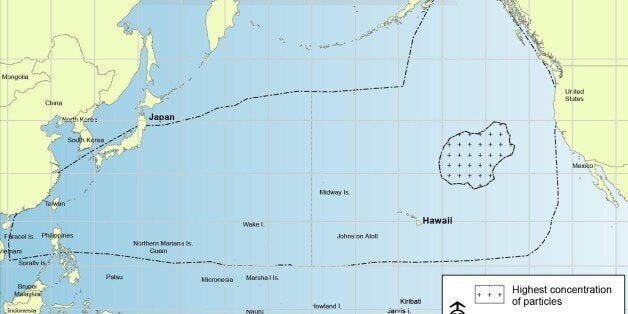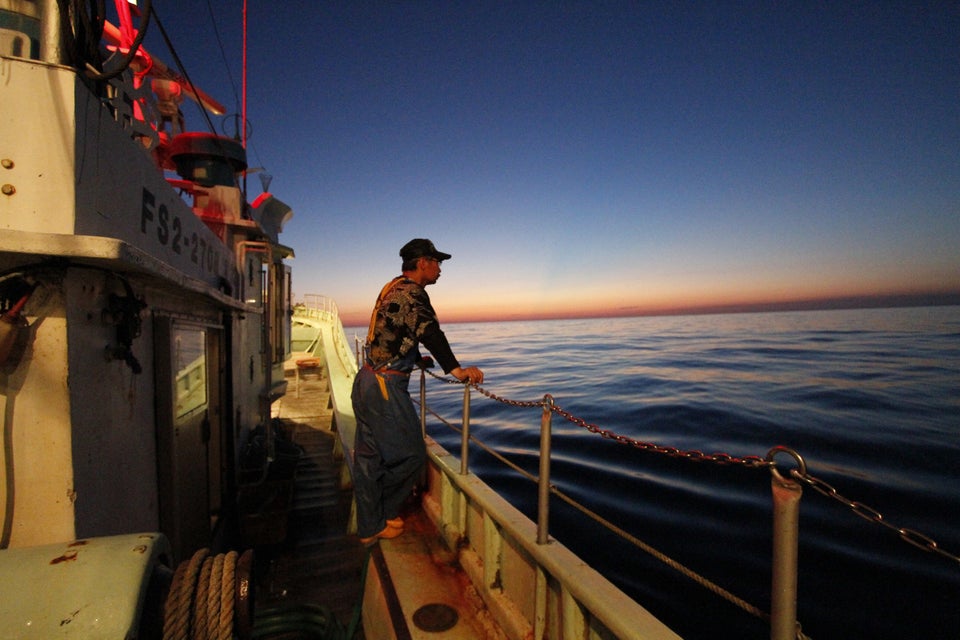
A graphic released by the National Oceanic and Atmospheric Administration has sparked fears of a massive, Texas-sized "island" of toxic debris heading toward the United States from Japan.
While the map has certainly provided fodder for catchy -- if slightly cataclysmic -- headlines, it now appears the fears it prompted are overblown.
Stories about a "toxic monster" of debris dislodged by the 2011 tsunami in Japan began circulating earlier this week after the NOAA released a map that appeared to show a solid mass of flotsam about 1,700 miles off the Pacific coast, between California and Hawaii.
Some outlets were quick to broadcast alarm, with The Independent warning of an "enormous floating island of debris" creeping toward the American coast. However, the NOAA has since clarified that while there may have once been 5 million tons of floating debris, 70 percent has since sunk, Salon reports.
"There is no mass ‘flotilla’ of debris headed toward U.S. coasts," an NOAA representative assured the outlet, noting that the map's outline merely represents a general area of higher concentration, not solidified mass.
The NOAA has since put out a statement that reads, in part:
At this point, nearly three years after the earthquake and tsunami struck Japan, whatever debris remains floating is very spread out. It is spread out so much that you could fly a plane over the Pacific Ocean and not see any debris since it is spread over a huge area, and most of the debris is small, hard-to-see objects.
This is not to say debris isn't headed for the U.S. In fact, a lot of debris has already landed on American beaches, and the NOAA says it believes there will be more in the future.
However, what's hitching rides on that flotsam is of growing concern, Fox reports.
"We’re finding that all kinds of Japanese organisms are growing on the debris," John Chapman, a scientist at Oregon State University' Marine Science Center, told the outlet. "We've found over 165 non-native species so far.... we’d never seen [some of these species] here, and we don’t particularly want [them] here."
